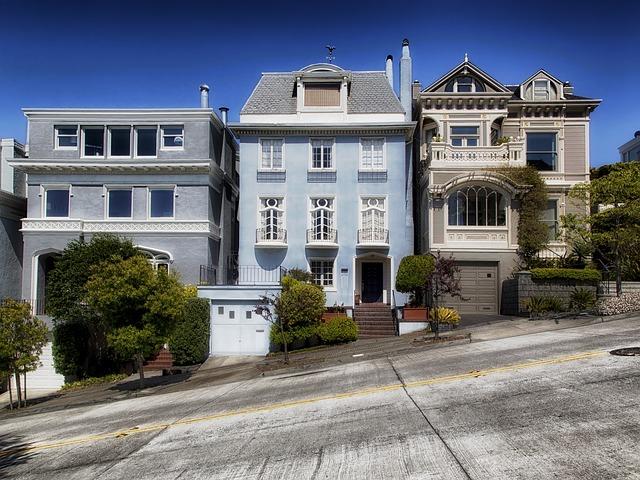How do you know how much to pay for a house – this has got to be one of the most commonly asked questions I hear. This, interesting enough, is quite surprising. I would think that with all of the popularity of real estate on the internet today, that this would be one of the first things people learn – how to determine value of something…
Determining Value Depends on the Asset Class
As it relates to assessing value of property, the appropriate methodology is all about the asset class you are dealing with, as well as the reason for which the appraisal is being conducted. Today we’ll be focusing on Single Family Residence (SFR). Understand, multifamily has very little in common with single family, and for this reason I will leave that for another day.
The basic rationale is as follows:
While it’s true that some of us use single family as an investment vehicle, as an asset class it is most widely recognized as simply a place to live. Vast majority of people buying SFR are not looking for an investment, but rather a residence. Additionally, both federal and secondary market guidelines relative to financing single family also recognize this asset class as primarily something people buy in order to move into it and live there.
Valuing a Single Family Residence as an Investment
Because all of the above is true, the assessment of value in the single family market has no bearing on its’ worth as an investment vehicle, but rather looks at it as an owner-occupied dwelling. And, this is an important point – even though as investors we have our guidelines for how we decide what stuff is worth, the basis upon which we build all of our assumptions has to be rooted in how the market as a whole values the asset. And the market doesn’t really care about income you can generate on a single family house. The market is simply concerned with identifying what other people are paying for houses like the one you’ve got.
And with this we’ve arrived at the Comparative Market Analysis
Comparative Market Analysis (CMA) for Investments
OK, so this is not hard. Let’s say you’ve got a three bedroom, two bath home, with a 1-car garage, and you are trying to figure out how much it’s worth in excellent condition. You are wanting to buy it, fix it up, and either sell it for a profit, or rent it.
CMA looks at other like-houses that have sold (we call the comps), and makes adjustments to the price for which they sold based on how their location, condition, size, and amenities compare to your subject.
Understand, a good comp has to be several things:
- Same general location (the closer, the better)
- Same style and design (don’t compare 2-story to ranch)
- Same general age (don’t compare 1920 to 2,000 construction)
- It has to have closed!
You get the idea…
How to Analyze Comparison Property #1
Now, let’s say that a house sold 2 blocks down within the same subdivision 3 months ago for $140,000. This comp was also a 3-bedroom. It was roughly the same age and square footage. It, like your subject, also had a 1-car garage. But, unlike your 2 bath-rooms, the comp had 1.5 baths. Knowing this information, and assuming similar condition, how would you arrive at a potential value of your comp?
Well – we know that the comp sold for $140,000. And we are assuming these are very similar houses aside for one thing – the half-bath verses a full second bath. So, the question is formulated this way:
Since I know that a house just like my subject but with one bath sold for $140,000, what value change above or below can I expect since I have a full second bath?
And the answer is phrased with another question:
How much are people in this neighborhood willing to pay for the privilege of having 2 full baths as opposed to 1.5?
Once you figure out the answer to this second question, you’ll simply increase the $140,000 that the comp sold for by whatever margin is appropriate. The main thing to underscore here is that this is not random, and it’s not a function of the asset. We are looking at the marketplace behavior as a whole…
In the end, let’s just say it becomes known to us that a full second bath is worth $3,000 more than a half bath. In other words, people have been, according to past sales, willing to pay on the average $3,000 for hoses with 2 baths as opposed to 1.5.
In this case, since everything else in our comp compares nicely to the subject, we can assume that the subject is worth $143,000 to the comp’s $140,000 – a positive difference of $3,000.
How to Analyze Comparison Property #2
Now let us consider a 3/2 comp which sold for $147,000, but unlike our 1-car garage, this comp had a 2-car garage. Well, since you know that a 3/2 with 1-car garage in this marketplace is worth $143,000. Based on that, the sale of a comp with 2-car garage for $147,000 would indicate that a second garage is worth $4,000. What this means is that if you can add onto your 1-car garage for less than $4,000, you’d actually be creating value…
Bringing Together the Comparable Properties to Determine Your Value
So – what you do with CMA is you get as many comps as possible and you build a matrix which synergizes the information for most accuracy. To understand how much amenities worth, you can either do these compare and contrast studies of sold comps yourself, or you can make friends with an appraiser. In any case, what you need to know is what the amenities are worth to buyers, so that you can look at recent comps and inflate/discount the sold prices by appropriate margins.
Income property next…

